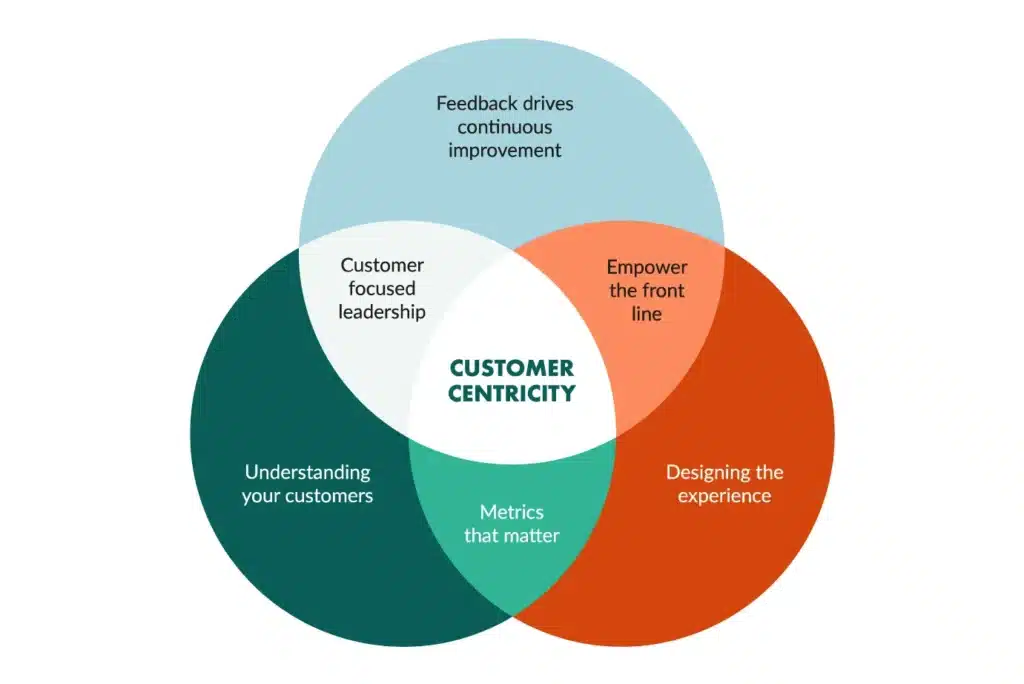In today’s competitive marketplace, a customer-centric approach is not just a buzzword but a strategic necessity. This approach prioritizes the customer at the heart of business operations, aiming to deliver exceptional customer experiences and build lasting relationships. Understanding the core principles of customer-centricity can transform how a company operates and dramatically improve its growth and profitability.
Table of Contents
Defining Customer-Centricity
Customer-centricity refers to a business philosophy where the customer’s needs and experiences are the primary focus of all business decisions and actions. It’s about more than just providing good service; it’s about creating a holistic experience that delights the customer at every touchpoint. A truly customer-centric business understands the importance of customer happiness and loyalty, and embeds this into every aspect of its organizational culture.
The Importance of Being Customer-Centric
Studies and business reports consistently show that companies focused on customer satisfaction outperform their competitors. For example, research by Deloitte and Touche found customer-centric companies to be 60% more profitable compared to their less-focused counterparts. Additionally, customer-centric companies enjoy higher customer retention rates, which is crucial since acquiring new customers can cost up to five times more than retaining existing ones.

Key Principles of a Customer-Centric Approach
- Customer Understanding: To be customer-centric, a company must have a deep understanding of its customers. This involves collecting and analyzing customer data through interactions and feedback. CRM systems play a crucial role here, providing a 360-degree view of the customer, which helps in personalizing the service to their needs and preferences.
- Customer-Focused Culture: This is about ensuring that every employee, from the top down, buys into the idea of putting the customer first. This cultural shift often requires training and a clear communication of the company’s values and goals regarding customer satisfaction.
- Holistic Customer Experience: Every touchpoint with the customer, from the initial contact to post-sale service, should be designed to build a positive relationship. This means aligning marketing, sales, and customer service teams to work together seamlessly to serve the customer’s needs.
- Responsive Feedback Systems: A customer-centric organization listens to its customers. Feedback systems should not only collect customer reviews and comments but also act on them to improve the product or service continuously.
- Employee Empowerment: Employees should be empowered with the right tools and authority to solve customer issues. Empowered employees are more likely to take initiative to deliver a better customer experience.
Challenges in Adopting a Customer-Centric Approach
Shifting to a customer-centric approach involves several challenges. It requires a change in organizational culture, which can meet resistance from employees accustomed to traditional ways of working. Additionally, siloed data and lack of integrated systems can hinder the sharing of customer insights across departments.
Implementing a Customer-Centric Strategy
- Align Leadership: The shift to customer-centricity must start at the top. The leadership team should define clear customer-focused goals and foster an environment that supports these goals.
- Integrate Customer Data: Centralize customer data from various touchpoints to gain a unified view of customer interactions. This integration helps in understanding customer behaviors and preferences more effectively.
- Focus on Employee Training: Regular training programs should be implemented to help employees understand their role in delivering exceptional customer experiences. This includes training in communication skills, empathy, and problem-solving.
- Measure and Adapt: Key performance indicators (KPIs) like Customer Satisfaction Score (CSAT), Net Promoter Score (NPS), and Customer Effort Score (CES) should be measured regularly. These metrics help a business understand the effectiveness of its customer-centric strategies and adapt as needed.
Benefits of a Customer-Centric Approach
Adopting a customer-centric approach can lead to numerous benefits:
- Increased Customer Loyalty: Satisfied customers are more likely to return and recommend the business to others, driving repeat business and referrals.
- Enhanced Brand Reputation: Positive customer experiences lead to positive reviews and testimonials, which enhance the brand’s reputation.
- Operational Efficiency: Understanding customers can lead to more effective marketing, sales, and service strategies, optimizing the use of resources.
- Competitive Advantage: Outstanding customer service can become a key differentiator in industries where products and prices are similar.
Continuous Innovation and Customer Expectations
Jeff Bezos’s insight into customers being “divinely discontent” highlights a key aspect of customer-centricity—the need for continuous innovation. As Bezos emphasized in his 2017 Letter to Shareholders, “One thing I love about customers is that they are divinely discontent…People have a voracious appetite for a better way, and yesterday’s ‘wow’ quickly becomes today’s ‘ordinary.” This concept underscores the importance of not just reacting to current demands but anticipating future needs. In a customer-centric model, this means consistently evaluating and enhancing the customer experience to meet and exceed these evolving expectations. By understanding that yesterday’s innovations quickly become today’s expectations, companies can continuously adapt and innovate, ensuring they remain ahead of customer satisfaction curves and maintain a competitive advantage. This philosophy is crucial for staying relevant and successful in a rapidly changing market.
Conclusion
In conclusion, a customer-centric approach is essential for businesses aiming to thrive in today’s market environment. It requires a dedicated effort across all levels of the organization to truly understand and meet the needs of customers. While the transition may involve challenges, the long-term benefits of loyal customers and sustained growth are well worth the effort.




